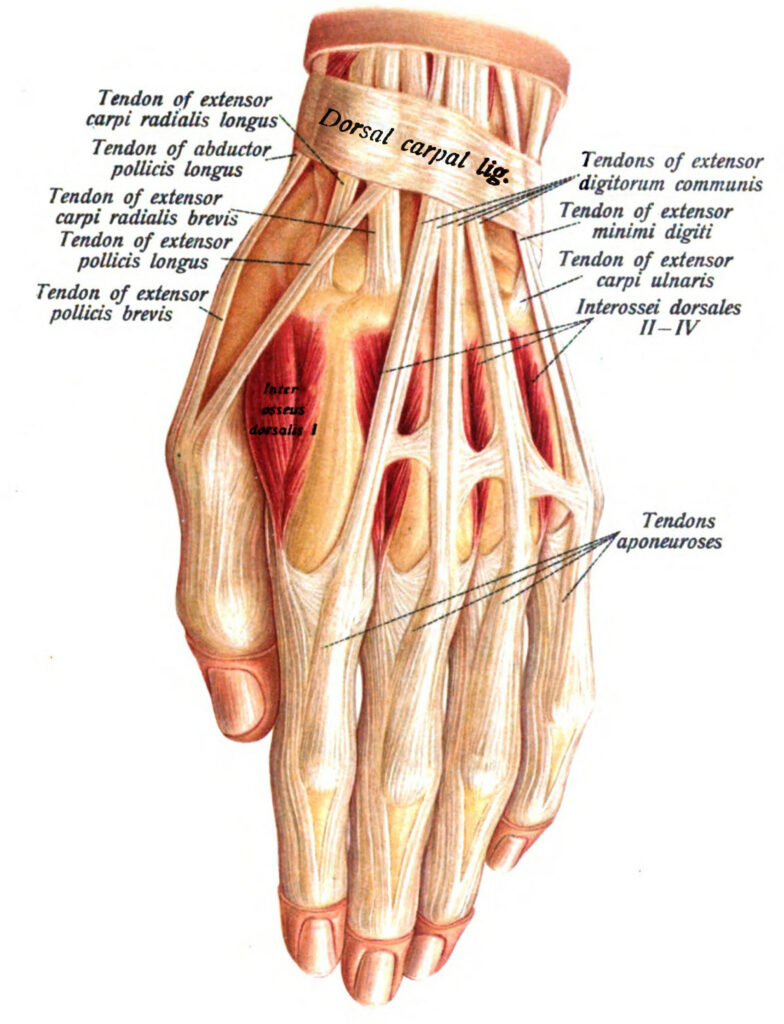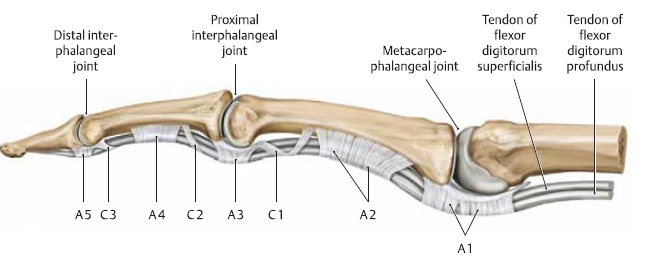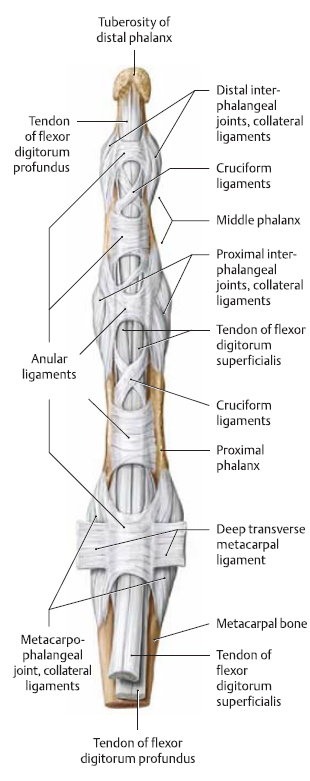Your fingers hurt from climbing because you haven’t given them enough time to recover and adapt to your training load. This leads to an accumulation of microtraumas which can, in turn, lead to injuries. Typically, you’ve increased the amount you climb suddenly, tried hard routes too often and too soon, or climbed too much of the same.
In this blog, we have a look at what microtraumas are, which structures you can hurt in your fingers, and how long it takes for your hands to be climb-ready again.
Let’s start!
1. What is Microtrauma?
Microtrauma is damage done to bodily structures as a result of training without them being broken.
Sounds a bit contradictory, doesn’t it?
It does. But even though microtrauma isn’t due to trauma, as in an accident or an acute injury, it can have similar consequences.
The best way to look at microtrauma is to think of sore muscles. Delayed Onset Muscle Soreness (DOMS), the official name for sore muscles, is due to microtrauma to your muscles. In response to this microtrauma, your body heals to a higher level. This is called super-compensation and results in you getting stronger and bigger muscles.
When your fingers are hurting though, the microtrauma isn’t in your muscles. But rather in your joint capsules, tendons, ligaments, and/or tendon sheaths. More on that in a bit.
These structures, unlike muscles, aren’t as elastic and have a slower metabolism. As a consequence, these structures respond slower to load. So, when your muscles have adapted to your new climbing intensity, your tendons and ligaments are still thinking; “what just happened?”.
2. Which Structures can Hurt in Your Fingers?
The following structures can provoke pain in your fingers:
- Tendons which connect muscles to bone
- Ligaments that limit movement
- Cartilage, a spongy type of bone that lies across the surfaces of your joints
- Tendon sheaths are tubes of connective tissue which help your tendons slide better.
- Pulleys are ligaments specifically designed to help your tendons slide well in your fingers
- Muscles that make your hand move

As shown in the images above, all the structures I mentioned before are connected and work together. This is the case throughout your entire body, but in the hand, due to its giant amount of movement possibilities, even more so.
Our hands make us unique animals because we can put our thumb opposite our hand palm. A movement called opposition. Otherwise, we can type, climb and play piano with our fingers. This demands a large amount of coordination and a large variety of movements.
Our hands make us unique animals because we can put our thumb opposite our hand palm. A movement called opposition. Otherwise, we can type, climb and play piano with our fingers. This demands a large amount of coordination and a large variety of movements.
Our hands make us unique animals because we can put our thumb opposite our hand palm. A movement called opposition. Otherwise, we can type, climb and play piano with our fingers. This demands a large amount of coordination and a large variety of movements.
As a consequence of this tight collaboration the type of structure that is injured is less important than its function and its location. An example of this is the pulley system and the joint capsules which are the same structure or otherwise closely connected.


3. When do Microtraumas Turn into Injuries?
Microtraumas turn into injuries if you don’t give them enough time to heal. If we have another look at the difference between muscles and tendons and ligaments, muscles can heal and adapt within days. Ligamentous and tendinous tissues, on the other hand, take weeks. This means that you can easily overload your joints, ligaments, and tendons, long before you notice it.
Microtraumas turn into injuries if you don’t give them enough time to heal. If we have another look at the difference between muscles and tendons and ligaments, muscles can heal and adapt within days. Ligamentous and tendinous tissues, on the other hand, take weeks. This means that you can easily overload your joints, ligaments, and tendons, long before you notice it.
Here are a couple of recipes for accumulated microtraumas turning into injuries:
- Increasing your climbing intensity too fast after a long period off
- Consistently crimping when you can use an open hand
- Inefficient crimping technique (letting the joints extend too often)
- Suddenly increasing your climbing intensity
- Going on a climbing holiday (and climbing every day) without proper preparation
- Ignoring early signs of overload (feeling weak, reduced sleep, reduced hunger, pains that come and go)
Sticking tightly to the recipes above you might develop injuries like:
- Cartilage damage
- Stress fractures
- Ligament tears
- Pulley tears
- Tendinitis
- Arthritis
- Tendinopathy
- Inflammation of tendon sheaths
- Ligament tears
Does this mean that the little pain you’re feeling right now is a sign that you’re about to get injured?
No.
It is, however, smart to track early signs of overload. And if you notice any, respond by:
- Increasing recovery time
- Reduce climbing intensity
- Change type of climbing (more slabs or bigger holds for example)
- Go on a (no-climbing) holiday
But what if you’re really injured. How do you know?
If you notice one or more of the following symptoms:
- Pain at rest or pain that is provoked by little to no climbing
- Signs of inflammation; redness, swelling, pain, loss of function (losing mobility or strength), and heat
- When you notice a significant reduction in strength and mobility compared to your healthy hand
4. How Long Does it Take for Your Fingers to Heal?
It depends on the severity of your injury how long it takes to heal. But as a rule of thumb, the longer you’ve been in pain, the longer it takes to heal.
Besides that, each structure has different regeneration times. Here’s a rough overview of how long each takes to heal:
- Bones (acute fractures, stress fractures, avulsion fractures (when a small piece of bone connected to a tendon or ligament is torn away from the main bone)): 6 months-2 years
- Tendons (tendon ruptures, tendinopathy, tendinitis): 3 months-1 year
- Ligaments (arthritis, capsule tear, pulley tear): 3 months-1 year
- Cartilage (tears): 6 months-1year (if at all)
It could also be that injured structures will be damaged forever.
Oh no!
Yes, tendons after tendinopathy will be structurally different from ones that were never injured. A torn ligament won’t recover to its original strength. And cartilage damage is known to not heal after the age of +-16-20-year-old.
Luckily though, if you treat your injuries well you might never notice the difference.
5. When Can You Start Climbing Again?
You can start climbing again after you injure your fingers when the inflammation has gone. And depending on the severity of your injury, after at least taking a break of 2-4 weeks from climbing.
Never start climbing full throttle, but always progress from:
- Short to long sessions
- Big open holds to crimps
- From easy to harder routes
- From lower volume to higher volume sessions
- Never climbing two days in a row to climbing multiple days in a row
Build this up progressively over the course of 3-6 months. While doing exercises that specifically strengthen the injured structure that you injured.
The above is the art of load-management and the essence of all rehab related to overload injuries.
It depends on your work, fitness levels, climbing levels, type of injury, and a whole host of other factors, how you reload your injured structure. That’s why I’ll write separate blogs on the treatment of different types of hand injuries. As soon as I publish them, I’ll link them here.
6. Important Take-Aways
In this blog, I discussed why your fingers hurt from climbing. I focused on climbing injuries that are a result of overload and have their origin in the fingers. There are plenty of injuries and overload issues that can result in pain in the fingers with their origin being somewhere else. These are for example:
- Triggerpoints in the shoulder and elbow muscles
- Carpal Tunnel Syndrom
- Herniated Discs in the neck (not common in climbers as far as I know)
- Auto-immune diseases like osteoarthritis
Furthermore, I didn’t discuss muscle damage because as a climber you’re unlikely to injure a muscle in your hands due to overload. You’re more likely to injure a tendon or ligament before.
If there’s one thing you take from this blog though: become aware of symptoms of overload and act accordingly. Preventing injuries takes a lot less time than healing them. All it takes might just be a couple of rest days and bringing more variety to your climbing intensity.
If you have questions specific to your situation, don’t hesitate and send me an e-mail. I’m happy to help.
